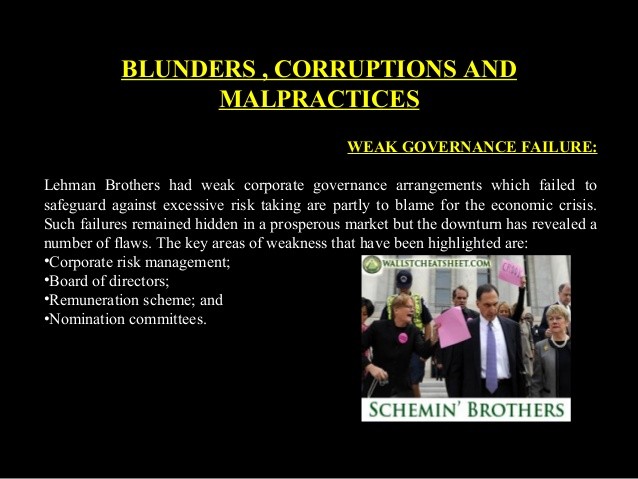The Collapse of Lehman Brothers – Lessons Learned Corporate Governance and Ethics
Post on: 16 Март, 2015 No Comment

Let’s step back and investigate the financial situation of Lehman Brothers before it collapsed.
On April 1, 2008, two weeks after the government arranged the sale of Bear Stearns (Bear), Lehman Brothers (Lehman) announced that it had raised $4 billion of new capital in the form of convertible preferred shares. (Yalman Onaran, 2009). On the news, Lehman’s stock rose 18% to $44.34, an increase of 18% from the prior day’s closing price (see Exhibit 1).
Lehman’s traditional strength was in fixed income. In 1995, over 55% of the firm’s revenues came from this area. By 2007 the proportion had fallen to 39% of the firm’s total, but fixed income remained the dominant business (see Exhibit 2) . Fixed income securities made up 59% of the securities on its balance sheet at year end 2007 (see Exhibit 3) . and Lehman was among the perennial leaders in fixed income underwriting (see Exhibit 4) . The firm’s particular area of expertise and focus was in mortgage related securities. The first part of the strategy worked well, and Lehman had built dominant leadership positions in underwriting mortgage backed securities (see Exhibit 5) . and by year-end 2007 mortgaged-related securities and loans accounted for 28% of the firm’s total assets, larger than any other asset class. (Rose, Ahuja, 2011)
By the end of 2007, Lehman held $79 billion dollars of mortgage related assets on its balance sheet at year end, approximately half of which was commercial and half residential, and $5.3 billion was sub-prime. The firm’s Level III assets those for which there was no traded market from which to derived valuations, requiring that they be “marked to model” according to the US accounting rule FAS 157 – increased by $6.5 billion during the quarter, to $38.9 billion, and represented 6% of Lehman’s total assets and 170% of shareholder equity (see Exhibit 6) . The firm’s leverage ratio at year-end, its assets divided by shareholder equity, was about 30.7 times. (Rose, Ahuja, 2011)
In May 21 2008, Lehman stock closed down 6% to $39.56 per share that day
On June 2, 2008, Standard & Poor’s announced that it was downgrading the credit ratings of Lehman Brothers and Merrill Lynch to A from A+ and Morgan Stanley to A+ from AA-. (Michael Patterson, 2008)
In June 2008 Lehman shocked investors by reporting its first ever quarterly loss. Fitch. lowered Lehman’s long term debt rating to A+ from AA-, and Moody’s lowered its outlook for the firm to negative (Rose, Ahuja, 2011)

On September 7 th. after the Government rescued Freddie Mac and Fannie Mae and Lehman announced a large third quarter loss three days later, the bank began to have pronounced liquidity problems. That weekend, after exhausting private sector solutions, the government made it clear that no public money would flow to Lehman. Lehman Brothers Holdings, Inc. filed for bankruptcy. (Ryback, 2010)
Analyze and describe the motivation of the companys mangers that allowed or created misleading financial statements or engaged in unethical practices in order to influence the companys stock price.
There are lots of examples we can pull out from different references. We are going to illustrate couple examples of what Lehman did unethically.
On May 21 2008, David Einhorn. the co-founder and President of hedge fund Greenlight Capital. raised questions about Lehman and announced that his firm had a short position in Lehman’s stock. He went into greater detail about his view that its equity was overvalued. (David Einhorn, 2008) Among Einhorn’s most significant concerns about Lehman’s financial conditions were:














